Incubating future movements in travel and culture
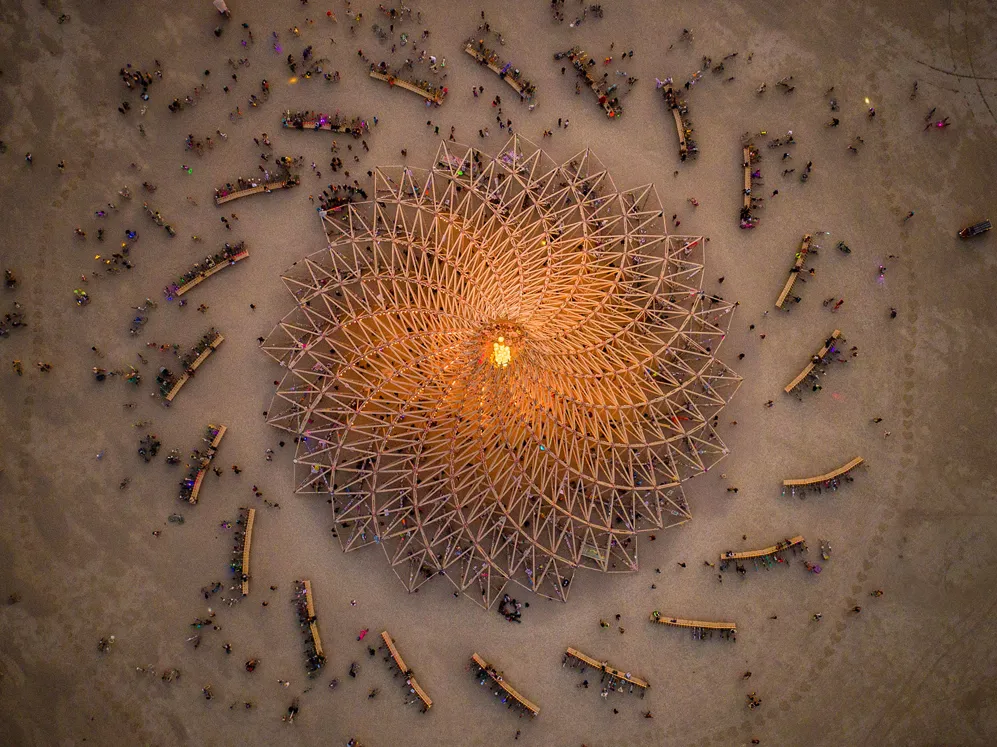
Words Karen OrtonImages courtesy Jamen Percy
Galaxia, the immense, spiraling, 3D-printed wooden temple at Burning Man in 2018, was as widely shared across design and architecture sites as it was between festival goers. The architect behind Galaxia, London-based French architect Arthur Mamou-Mani, is at the forefront of a new breed of pop-up, digital-fabrication-led architecture with a focus on festivals and public spaces. Having studied at the Ecole des Beaux-Arts in Paris and the Architectural Association in London, Arthur then worked with Jean Nouvel and Zaha Hadid before starting his own firm, Mamou-Mani Architects. He also teaches at the University of Westminster and takes his students to Burning Man annually, viewing it as a laboratory for new digital fabrication techniques and experimental pop-up structures.
Arthur Mamou-Mani: I think architects are slowly questioning the idea of a building. Often people say what I do is not buildings—but then you realize that a building doesn’t have to be permanent to be a space that brings people together. In the age of internet, we want experiences that bring people out of their homes. And temporary events and festivals are actually doing that. They’re bringing people to events that are unique and that last a very short time.
And how does festival culture play in to the way people perceive their surroundings?
Mamou-Mani: Festivals were here to celebrate plentifulness, events like the solstice or the harvest. They were a way to explain traditions to everyone and to create a sense of belonging. There was of course a religious and spiritual aspect to it. When people attend, say, Burning Man, they have this feeling of coming together as a community, and [they have] this [sense of] spirituality, which changes mindsets and opens consciousness. Obviously religion comes with dogma and stories, and not everyone wants to follow that. Yet they want to feel the spirituality and the depth of their life, and connect with other human beings. And not many spaces do that. There’s a lesson to be taken in how to bring people together on a higher level.
What are your impressions of Daniel Popper’s sculpture of Leto here at Further Mykonos?
Mamou-Mani: The way Daniel’s sculpture uses bamboo, rattan, and the lines that it expresses, the movement, the geometry, the crafted nature of it—I think it has something very timeless about it that speaks to everyone. It’s nice to have it in a place that is here for dancing, for eating. You know, if art can tell a bit of history and connect us back to the roots, then it brings us to certain depths, which I appreciate.
“There is a return to craft. I think this is partially due, strangely enough, to robotics.”
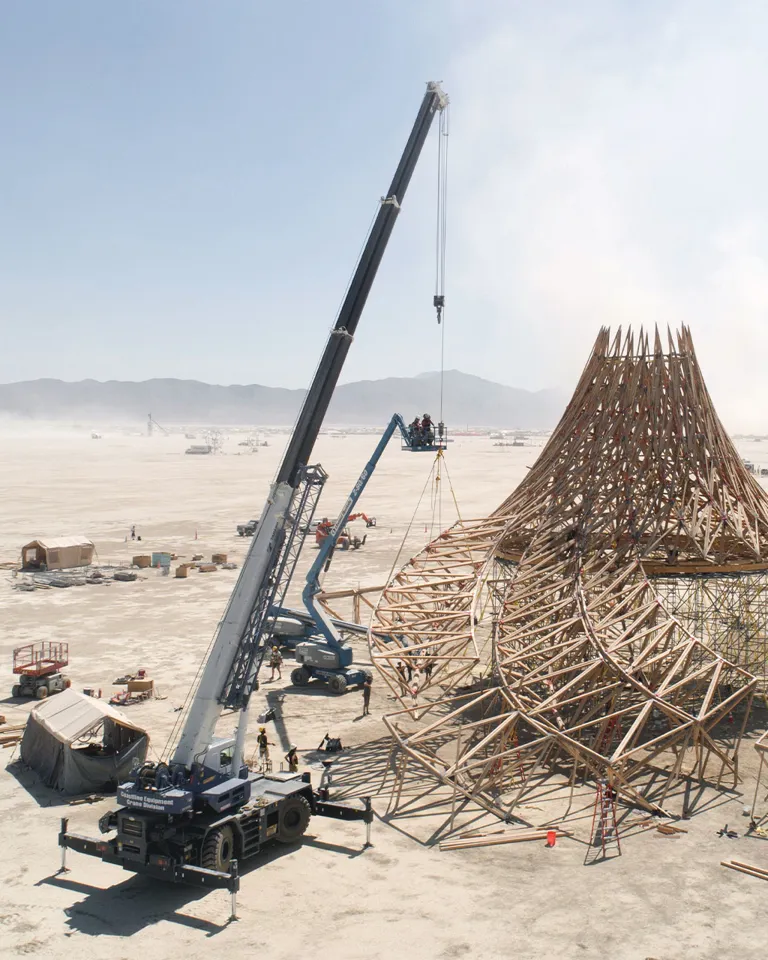

When you take your students to Burning Man, what do you want them to take from the experience?
Mamou-Mani: Burning Man has these 10 principles, you know: self-reliance, leave no trace, radical self-expression, communal efforts. These are really powerful ideas. They encourage one to be responsible for what one is doing and to think in terms of assemblies and disassemblies. I think it’s very important today to think of where things come from, where they go. This life cycle, this idea of a circular way of thinking of architecture and design: these are very valuable. The symbolism, the spirituality that comes with this gathering is something I think we’ve lost. We just talked about Daniel’s sculpture and how it connects to history—I think a lot of modernity has lost that.
Do you think we’re seeing a return to more artisanal methods?
Mamou-Mani: Yeah, there is a return to craft. I think this is partially due, strangely enough, to robotics. The fact that we brought the making closer to the designing through digital tools, like digital fabrication, 3D printing, and robotics, has brought us closer to the act of making. Often as architects, we send it to someone that will build for you. But things like festivals and the use of these machines have brought us back to being makers. I think that’s great because it means that we learn how to assemble things or to design better. Design was often a concept that was a bit separated from the physical object, strangely enough, but it shouldn’t be. Design became associated with very theoretical, abstract concepts. You know, “I’m a designer.” It came loaded with ego, and I think that it’s very humbling to build things, because materials don’t listen. The machines you use don’t listen. They do their thing, they have their own behavior. I think it’s our duty to listen and to learn and stop thinking we know everything.
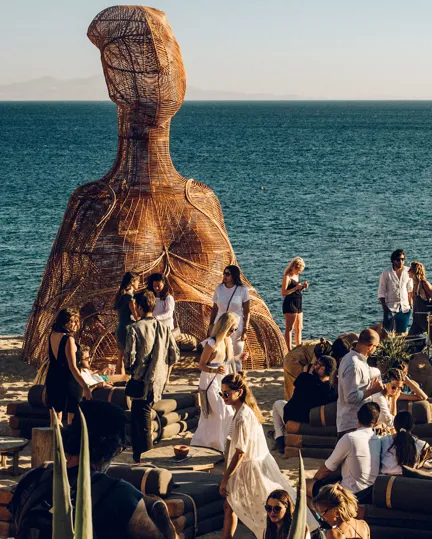
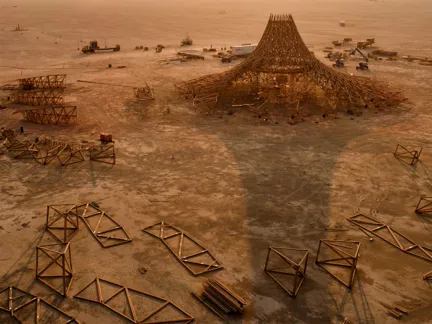
What is it about the present moment that is drawing people to festivals?
Mamou-Mani: There’s a lot of disconnection between the body and what we see. It’s a digital age, and the internet is a beautiful way of connecting with people, but also it disconnects us from other people and from the physical world. So people are looking for holistic experiences where they can share a sense of place with other people—like you have at festivals. They bring people together and give that sense of togetherness. So if anything, they are the perfect remedy for the online age.
Where do you see this process headed?
Mamou-Mani: I think there’s a desire to create gatherings and to transmit rituals and feel part of something together. It’s going to happen increasingly and it’s going to break a lot of boundaries. As religion dissipates and contemporary science and this sort of cynicism take over, we rediscover why we’re doing this. Festival culture will bring a lot of depth to things that might have been in the shadow before we partied together. Maybe there’s something deeper to that. Maybe one day we’ll look back and think, “Ah, actually this was much more important than we thought.” Just as we look back at Stonehenge or cathedrals. With the burning of Notre-Dame, for example, we realize that we really connect deeply with these things. And the way Stonehenge was specifically targeted towards one moment of the year, and this connection to the sun—there’s this link between architecture and the elements. As architects, these are things we can learn from. And as a community, we could reinvent rituals that help us understand each other.
The Eternal Festival

Further meets Persian-French opera singer Ariana Vafadari, who takes enigmatic Zoroastrian prayers from 3700 BC and transforms them into haunting operatic pieces that speak to 21st-century festival goers.
The Eternal Festival

French architect Arthur Mamou-Mani is pioneering a new direction in temporary architecture, employing cutting-edge digital technology and radical new perspectives on shared space.
The Eternal Festival
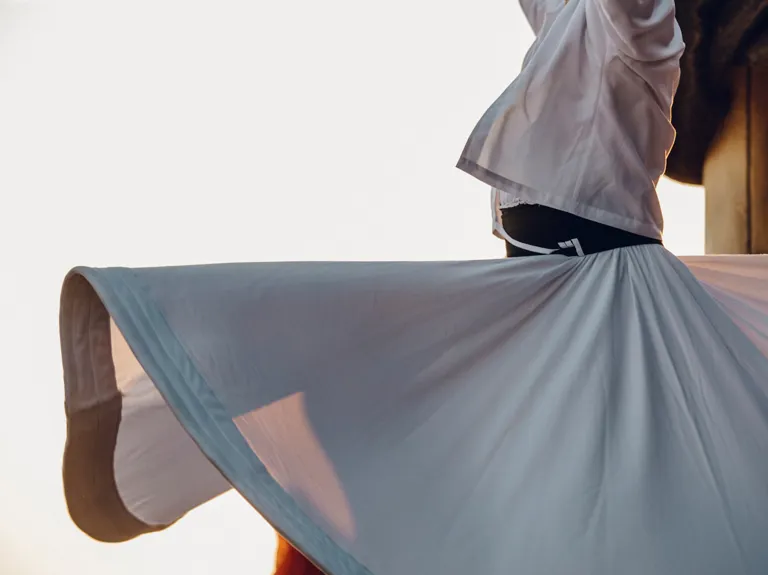
Further speaks to the spikey-haired Turkish luminary, whose singular sonic output melds ancient mysticism and musical traditions with contemporary electronic sounds.